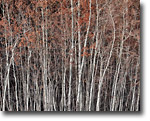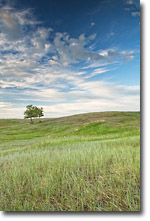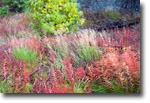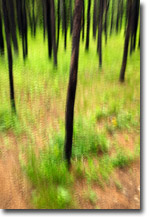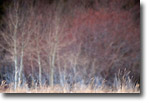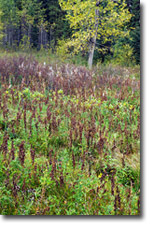Ten Timeless (and Maybe Unorthodox) Tips for Better Photographs |
|
As Nature Photographers Online Magazine turns ten, it is natural to look back and muse over what has changed in the world of photography. Probably the most obvious development is the domination of digital over film; you would have to be living on Mars to miss that tsunami. As tempting as it may be to expound on the pros and cons of the digital era, the focus of this article will be based on a certain premise: while in many ways technology has altered the image-scape, blurring the boundaries on what can even be called a photograph and what cannot, in other fundamental ways the principles of photography remain the same. This is essentially so because photography is first and foremost an art form. True improvement in image-making comes from perseverance and the honing of talent. Otherwise, with the purchase of some wonderful new gadget, we would all take award-winning images.
The following tips come with no guarantees. Trying some of them might make your photography better but not necessarily ‘amazing’, ‘jaw-dropping’ or ‘stunning’. Such hyperbole leaping off the cover of photography magazines is designed to sell equipment, not make you a better photographer. One fundamental principle that has not changed with the advent of digital cameras is that you will get out what you put in; great images are always the result of creative voice and mindful effort.
With that caveat out of the way, we can turn our attention to the ‘unorthodox’ part of making our images ‘better’. Perversely, in order to improve, we often have to stop making photographs—or at least take a step back. When you turn the conscious part of the brain toward something else, the unconscious part is still chewing away on old problems, and sometimes it cranks out surprising improvements. Not all of the following tips are about doing something else, but many of them are. Try them! You just might make better photographs
#1. Take An Art Class.
Recharge your creative batteries by plugging in to another visual art. Do painting, drawing or even sculpture. Let your brain approach colour, line, texture and pattern from a fresh perspective, and allow this knowledge to seep into your images.
#2. Don’t Be a Lone Wolf
There is a tendency with nature and landscape photographers to skulk around in the woods alone. Photographing by yourself is fine, but your images will be stronger if you connect with others. If you are at all interested in making money off your efforts, networking is an essential part of marketing your work in this changing industry.
#3. Look At Others’ Photographs
This point is related to the point above, and may seem obvious. If it does seem obvious, it is because it works. We all stand on the shoulders of giants. That’s okay; we get to where we are going faster that way. Looking at the photographs made by other artists exposes you to exciting new ideas. Study the classics but also look at the images being made by your contemporaries. Pay special attention to the fresh work produced by children because their way of seeing is often unclouded with the judgments we adults place on what we produce.
#4. Read a Book
As consumers, we have become conditioned to expect immediate gratification of our wants. Instead of going to the library to read about the fundamentals of exposure, we go online and buy a new filter. While there are tools we can buy to make images like Ansel Adams or Galen Rowell, gear only works when you know how and when to use it. If you do not understand the basic principles of photography, you will not be as creative as you can be. At best, you will be a poor imitator of other people’s art.
#5. Read Your Owner’s Manual.
This is probably one of the easiest but most overlooked piece of advice to make your images better. Modern cameras come with all the bells and whistles you can desire—can you use them all? Can you switch modes without thinking about it? Being familiar with what your camera can do certainly helps in being creative with it.
#6. Do What You Don’t Do
Photograph a subject that is new to you. If you photograph landscapes, set up a portrait session. If you prefer architectural work, go macro. There is no harm in being well-rounded in your profession, and you just might find new ways of enjoying and learning about photography.
#7. Participate In "Image Sprints"
Shaking up your routine can often startle you into new ways of seeing. One of the ways to do this is what I call an “image sprint”: carry around with you a camera that is small and easy to use. Point-n-shoots, disposables or even your phone are great for this exercise. Leave all your big gear at home. Take this camera with you everywhere for a few days and just take quick snaps of anything that catches your eye. On your way to work? Snap the garbage on the floor of your car. Shopping at the mall? Capture those rows of colourful shoes. Entertaining friends on the patio? Wow, look at the lovely shadows cast by the wine glasses!
#8. Shoot The Same Thing Again…And Again, And Again.
Pick a place or thing to which you have convenient access and photograph it repeatedly in varying conditions. Make a series of images of your efforts and look at how your work changes over time and with different conditions.
#9. Break The Rules.
Photograph something the way you normally would and then reshoot it in a way that deliberately breaks the ‘rules’. Stretch your mind to ‘see’ beyond the obvious picture that you normally make.
#10. Set yourself an assignment.
Pick a project that is interesting to you and requires a longer term investment. Be realistic about how much time you can devote to the project but follow through. Make a commitment to improving your photography over the long haul. The best way to make better images is to truly appreciate and reward yourself for the incremental gains!
Comments on NPN nature photography articles? Send them to the editor. NPN members may also log in and leave their comments below.
Samantha Chrysanthou was born in Lethbridge, Alberta. After moving for a period of time to northern Alberta, she returned in 2000 to southern Alberta to pursue a law degree in Calgary. After becoming a lawyer, Samantha began to realize her heart was more engaged in capturing the beauty of the landscape around her than debating the nuances of legal arguments in court. She has since left law to pursue writing and photography full-time. She particularly enjoys shooting the prairies, foothills and Rocky Mountains within an hour or so of her home in Cochrane, Alberta. Visit Samantha's website to view more of her work at www.chrysalizz.smugmug.com.
